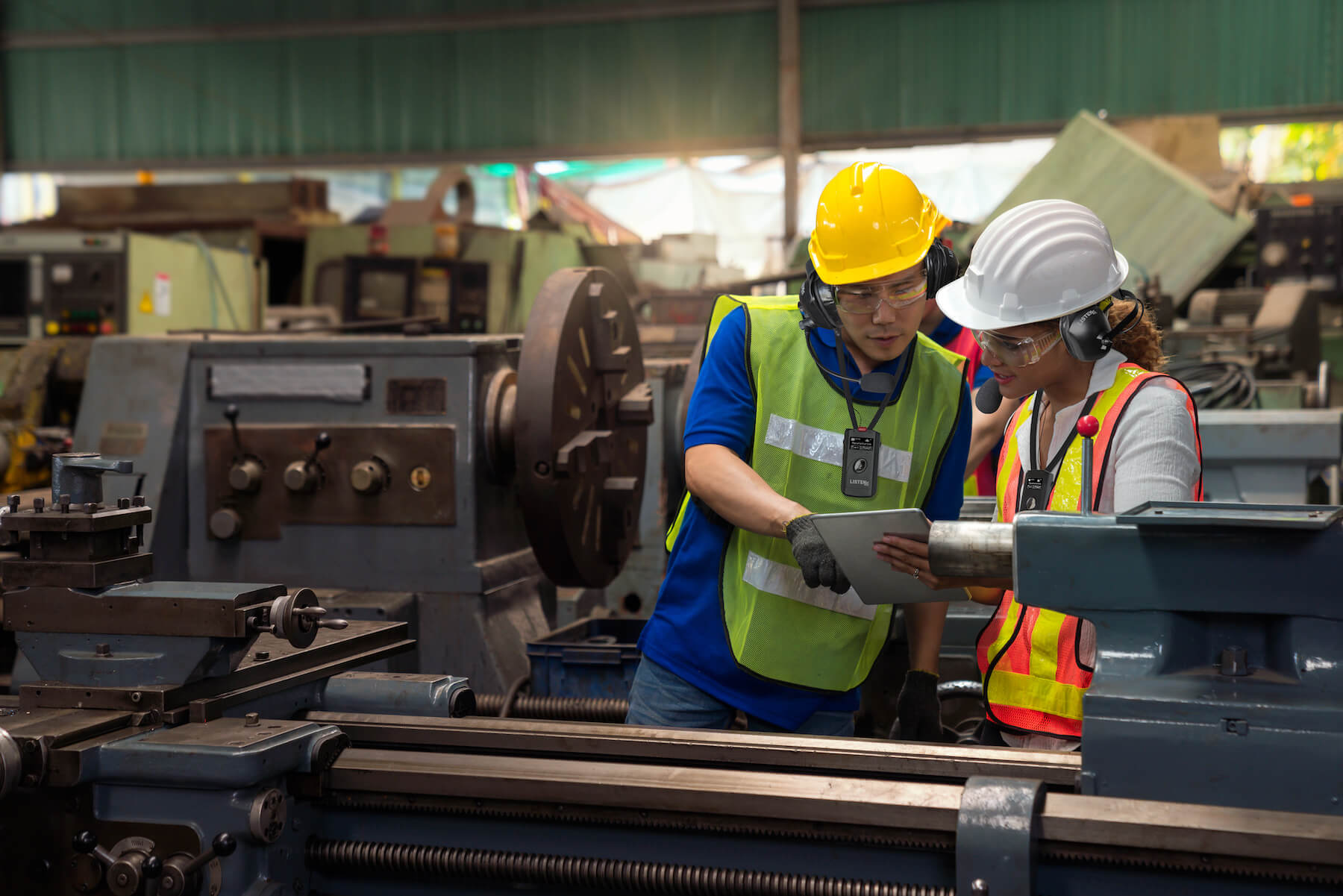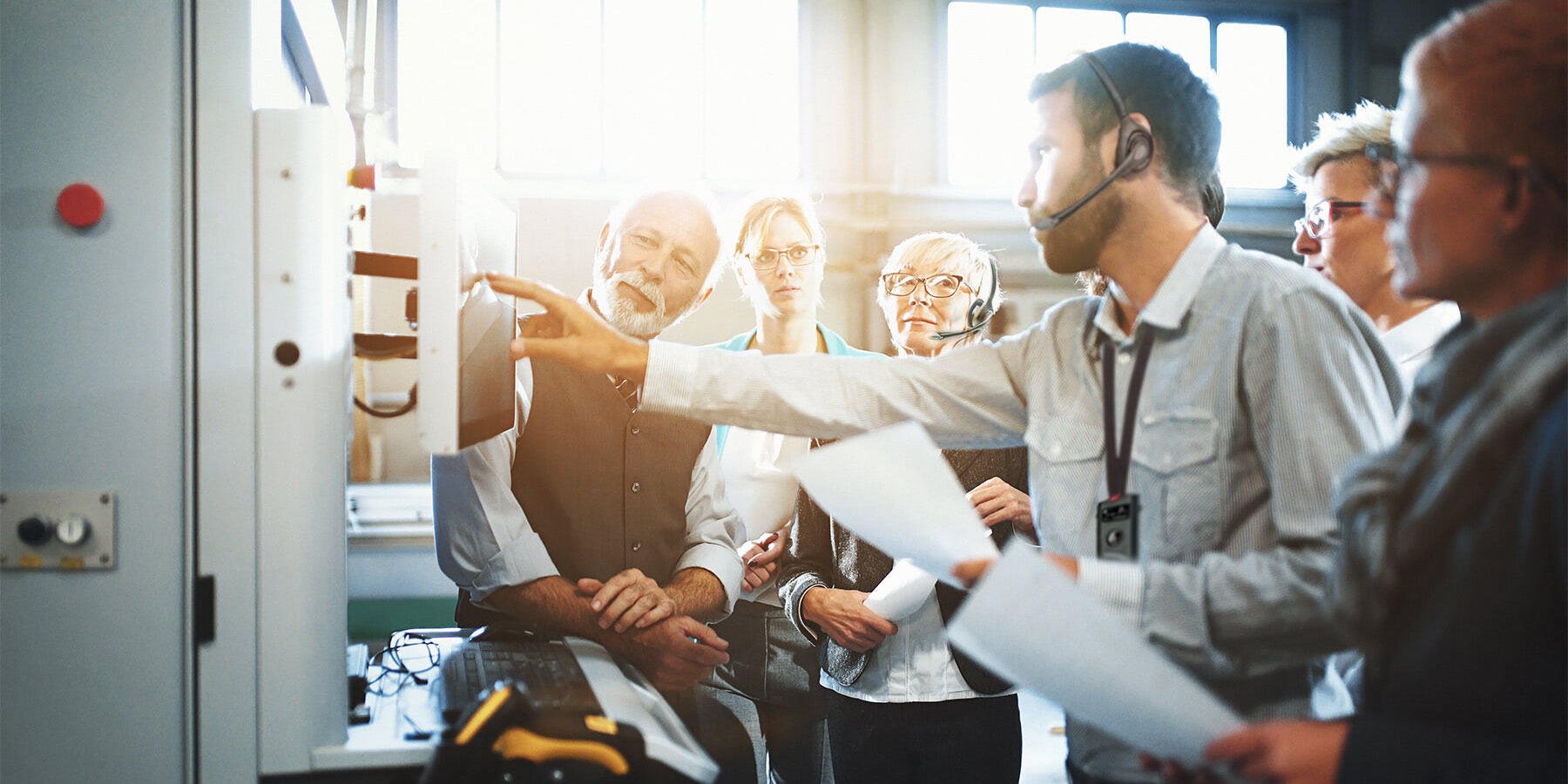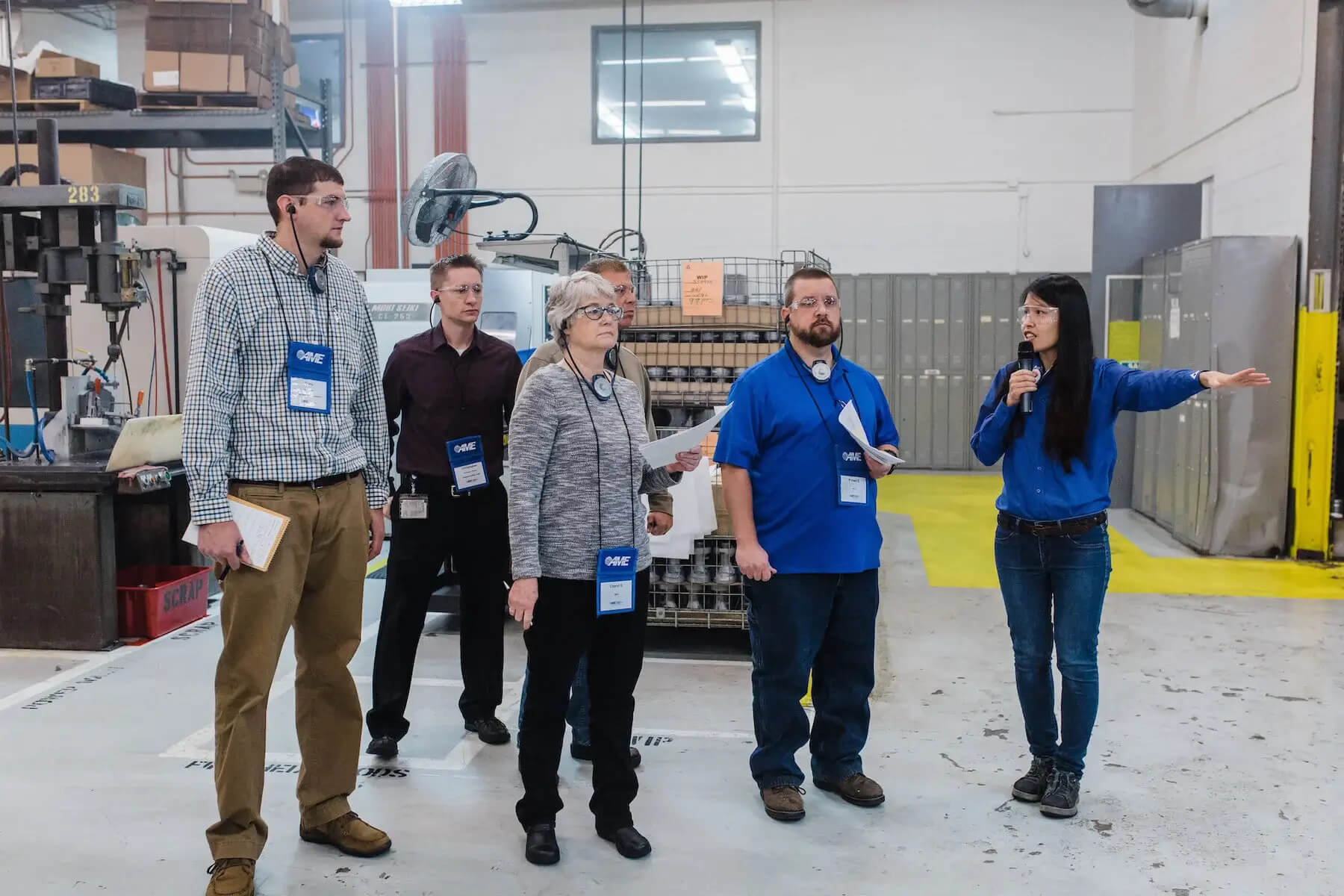SNR vs. NRR Headsets— An Easy Comparison Guide
The sound level on an average factory floor can range between 90 to 100 decibels (dBA) and sometimes reach even higher. To put that in context, it’s like standing next to a running lawnmower or chainsaw. That’s why the Occupational Safety and Health Administration (OSHA) requires ear protection for workers with high noise exposure.
Now imagine trying to have a conversation with a training or tour group of prospective clients or recruits in that environment.
Shouting to be heard over loud noises isn’t an option. Those who conduct factory tours need to consider the comfort and safety of their guests. A factory tour guide system with hearing protection is an ideal solution. But it’s important to understand their Noise Reduction Rating (NRR) or Single Number Rating (SNR) to ensure they adequately minimize risks.
RELATED: A Guide to Plant Tour Headsets
The Difference Between SNR vs. NRR
Factory tour guide systems that offer hearing protection will be equipped with NRR or SNR headsets. These ratings will indicate how much hearing protection can be achieved with each device. In general, the higher the SNR or NRR number, the better hearing protection you can expect. But why are there two types of ratings? It mostly has to do with geography.
What is NRR?
NRR stands for noise reduction rating and is the standard measure used to rate hearing protection in the United States and North America. The NRR method was developed by the Environmental Protection Agency (EPA) and is used by OSHA to ensure compliance with hearing protection standards.
Calculating NRR can be a bit confusing, but a headset with a rating of 25 NRR will generally reduce that 85-dBA environment to between 65–70 dBA. Tour headsets can go as high as 29 NRR, bringing the final decibel level being heard down to 60–65 dBA.
For work environments, OSHA requires that noise levels remain less than 85 dBA over an eight-hour work shift. However, tour guests will likely have difficulty hearing a tour guide clearly in that environment without a listening device. Even though OSHA regulations apply to workers, you’ll want to show your guests the same care for their safety by providing hearing protection and quality audio while touring your facility.
SEE ALSO: Types of NRR-Compliant Tour Headsets
What is SNR?
SNR stands for single number rating. Similarly to NRR, it is a measure of how much hearing protection a device provides (headphones, earplugs, etc.). The difference is that SNR is most widely used in the European Union and the U.K.
Just like there are differences between metric and standard measurements, there are differences in how hearing protection ratings are measured in Europe versus the U.S. There isn’t a simple NRR vs. SNR conversion rate. Still, NRR ratings are usually 3–5 decibels lower than SNR. For example, if you’re in an 85 dBA environment and wear a 25 SNR headset, you’ll only hear about 60 dBA.
Businesses in the U.S. don’t need to be as concerned about SNR since it isn’t widely used in North America. But if you host international guests for your factory tours, they may be more familiar with SNR and appreciate knowing you’ve invested in their safety by offering tour guide headsets with comparable hearing protection. You should also consider whether they’ll need a language interpreter and headsets equipped with an assistive listening mode.
In the end, the noise attenuation offered by both NRR and SNR headsets can provide sufficient hearing protection.
How to Measure Decibel Ratings
Knowing which NRR tour headsets are best for your facility needs to start with an understanding of how loud your current environment is.
Generally speaking, your noise levels likely exceed 85 decibels if you need to raise your voice to speak to someone three feet away. To determine precise levels requires the use of electronic devices including sound level meters, noise dosimeters or octave band analyzers. You can also download the NIOSH Sound Level Meter app to your smartphone.
When choosing NRR headsets for factory tours, ensure you take readings throughout your facility. A challenge is that decibel ratings can vary from one day to the next depending on which equipment is running or which projects are being worked on. It’s best to take multiple readings throughout the week to find your loudest decibel rating and plan accordingly.
Even if you select an NRR-compliant tour headset system, it’s important to know that the actual protection it provides will depend on properly fitting the headsets. Instructing your guests on how to use the equipment is critical. There are many other plant tour best practices you should follow as well. Use our Manufacturing Plant Tour Planning Guide & Checklist to discover other ways to help your guests have the best experience.
Contact the team at Implecho to customize an NRR-compliant solution. Our team can configure a one-way or two-way tour guide system that is easy to use and provides you and your guests with top-notch sound quality and features. We can even provide a demo kit so you feel confident about your decision. Get in touch with our team to explore the possibilities.
You May Also Like
These Related Stories
Types of NRR–Compliant Headsets for Factory Tours
Guided factory tours or training, whether in showrooms or on the production ......
Best Headsets for Gemba Walk Tours: What to Look For
Continuous improvement is the battle cry of most manufacturing companies. Truly ......
The Top 5 Uses for a Tour Guide Communication System
Tour guide systems are used for tours, right? Yes, that’s true…but there’s more ......
We're Here to Help Guide You




